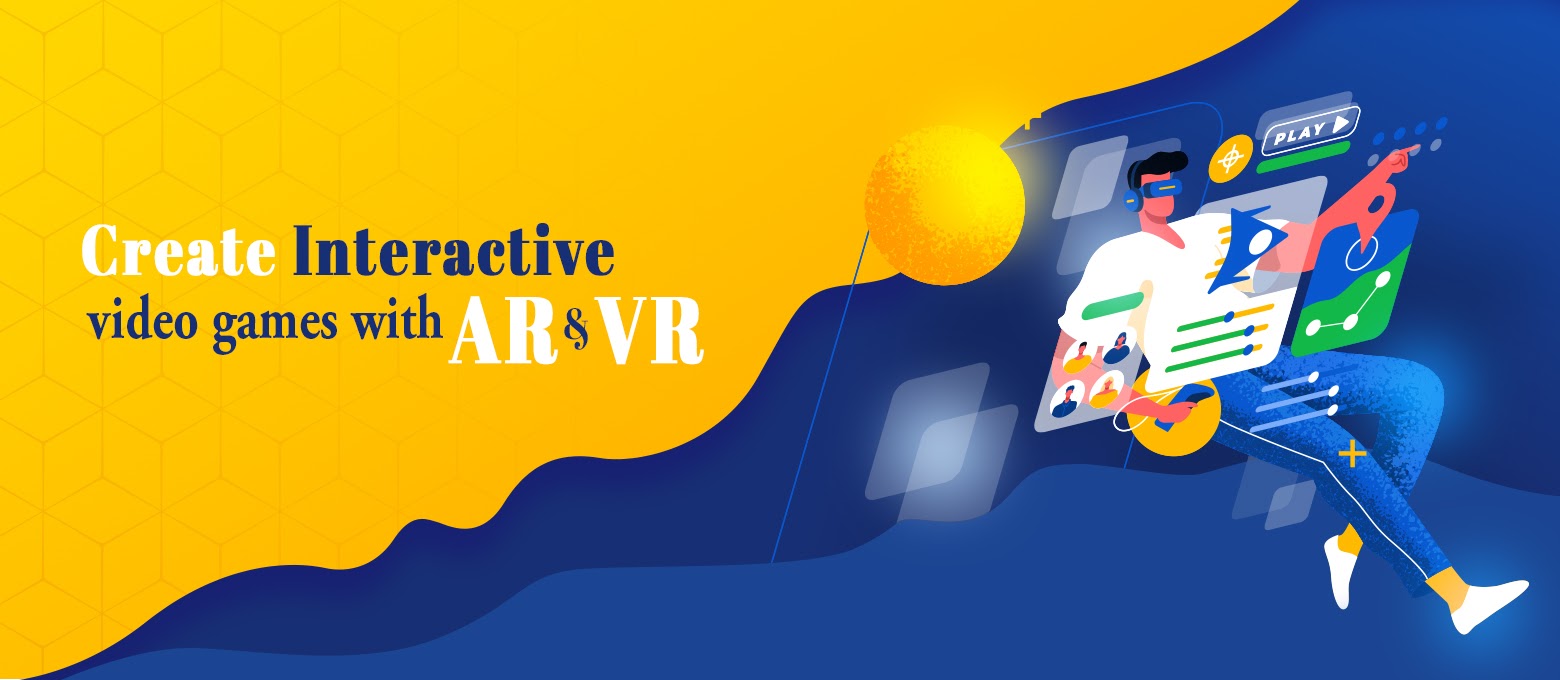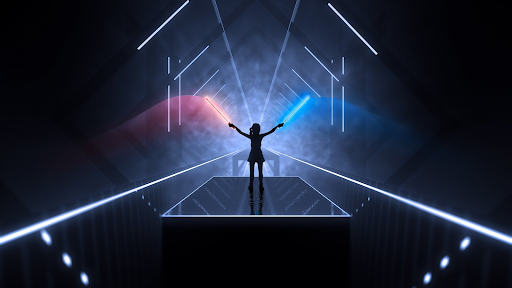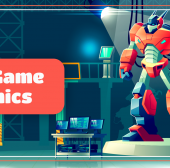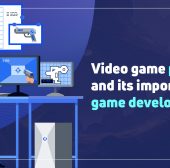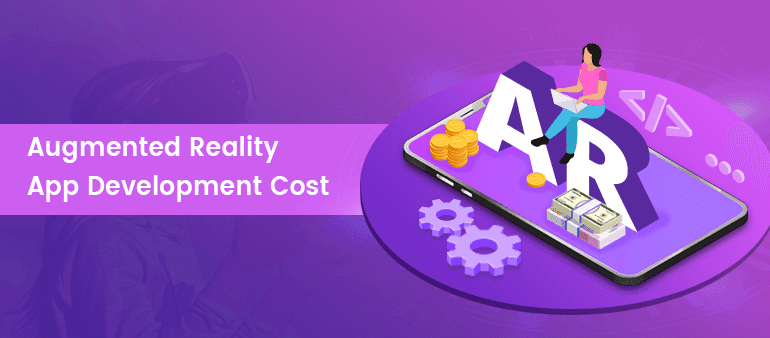The Market for AR and VR for Gaming is forecast to reach $11.0 billion by 2026, growing at a CAGR of 18.5% from 2021 to 2026. The market is driven by the growing popularity and integration of AR and VR technologies in mobile phones and other wearable devices. (Source: Industryarc)
The above statistic makes one thing very clear that the gaming industry has seen tremendous growth over the past few years and predominantly smartphones are the major cause behind it. It wouldn’t be wrong to say that the industry owes its expansion to the smartphones that have given the users the flexibility to play anywhere and at any time. Augmented reality and Virtual reality are a user-focused technology that does amazing things and let’s people indulge in experiences that bring imagination to life. One can’t help but wonder about the experiences it provides its users to interact with the digital world by commingling the real world with the virtual.
You may also read: Future Of Smartphones With Increasing Dynamic User Experiences
There are a lot of big investments happening in these commercially feasible technological advances and the percentage for this is just expected to grow in the coming years. As regards, there are many reasons behind businesses showing strong confidence in Augmented reality and Virtual reality, few of which we will discuss going forward. But for those of you who are new to this subject, let;s first understand what these terms actually mean.
Augmented Reality & Virtual Reality
Many of you must have heard about the popular Nintendo owned “Pokemon Go”, an Augmented Reality game that works by placing the Pokemon on a world map and allowing the player to control it to catch other pokemons. A player starts from a specific location and uses their phone camera and GPS to see the Pokemon in the real world, find other pokemons and catch them. As the player moves in real life, so does the pokemon in the game on your mobile screen. This interaction of the game and real life is what Augmented Reality is. When the digital world and the physical elements come together to form a synthetic environment.
Image source: Techgenyz
However, Beat Saber by Beat Games is a great example of a Virtual reality rhythm game where the player is placed into a three-dimensional environment and the player has to slash blocks representing musical beats with the use of a pair of glowing sabers. The movement of the avatar in the game is controlled by the movement of the player’s body using VR motion controllers. This simulation of another world or reality through computer or sensory devices is Virtual reality.
Image source: PlayStation
Further let’s discourse a few points on why developers should use AR and VR technology to build entertaining and immersive games.
AR and VR gives the player an indulging experience
We cannot neglect the fact that the use of AR and VR in gaming gives us quality games that are rich in graphics, and offers precise controls to the players other than the immersive experiences it provides. AR and VR allows designers to pay attention to the intricate details of the game and lets them give the players an emotional and exceptional experience that stays with them and makes them want to return to the game. With improved game mechanics, VR and AR game development brings increased potential for unexampled motion and gesture. It allows gamers to interact with elements and game controls giving them flexibility and command. For a gamer it is like feeling the wind in their hair or feeling the vibrations during fake explosions and gun flighting.
These innovations and technological advancements have been able to give the gamers an immersive digital experience which earlier was not possible. It also allows the user to play in their own avatar, live the virtual experience in gaming by providing them with an alternative environment. These immersive experiences are influential, compelling, and entertaining. There is a synthetic environment that virtual reality game development creates for the users and somehow the physical movements of the user are also directly connected using sensor-equipped gloves, hand controllers, etc. with the computer via VR headsets so that the user’s feelings and experience is extremely engaging and immersive. And, these engaging games or content when introduced to the target market helps in generating results through sales, consumer loyalty and reach.
How VR headsets work? |
|
To understand how these VR headsets work for a user and how VR locomotion of the avatar takes place, one needs to understand the Degree of Freedom that is the number of directions an object or avatar can move in a 3D space. The total number of directions in which an object or avatar can possibly move are six. And having said that, the VR headsets are of two types - 3DOF and 6DOF. 3 Degrees of Freedom (3DOF) VR headsets include the rolling (head pivots side to side), Yawing (head swivels along a horizontal axis), and pitching (head tilts along a vertical axis). Although 6 Degrees of Freedom (6DOF) VR headsets offer 3 additional directions which are elevating (person moves up or down), strafing (person moves left or right), and surging (person moves forward or backwards). |
Forecasts project massive growth in both AR and VR headset sales in the coming years, with both technologies combined expected to sell over 26 million units per year by 2023. (Source: Statista)
The virtual industry is growing at a tremendous rate and the developers are working towards fulfilling the demands of the market that is to create applications that are affordable and go beyond entertainment. And so there is work being done to create cableless headsets with powerful processors that will allow users to view images in HD. The next few years might also see integration of AI and 5G into VR and AR shaping an advanced future for the gaming industry.
Gives creative content to the gamers
The experience that AR and VR development provides is undoubtedly ultimate but besides that it also delivers engaging and multidimensional content for the users that is thoroughly coded by the game app developers. The game developers also propose customized content for the targeted audience. There are several softwares, headsets, and content creation apps like Blippar and Zappar that are democratising Augmented reality which will let anybody create their own AR experiences. AR gaming also primarily incorporates game audio and visual content into the gamer’s environment in real-time.
You may also read: VR website development
Revitalization of the 3D experience
3D technology was introduced to the world in the year 1984 but it is now that this technology has been emerging and proactively being leveraged by businesses to not just improve the experience of their users but simplify the working process. It’s growth has opened the doors to many promising opportunities for various industries, gaming being one of them. And in the last few years, the market has seen the revival of 3D technological progression on the gaming screens.
Allows real-time interaction
The AR and VR-powered games are immensely interactive which also make them all the more attractive, fun, and entertaining. Nonetheless, no player enjoys lags in information of image or gaming control. With Simultaneous Localization and Mapping (SLAM), this technology allows the users to combine real life and computer derived images in real-time. Visual SLAM is actually an algorithm that processes images from a video camera in real-time which is 30 frames per second. Now we understand AR and VR better but to understand the concept of real time interaction, we also need to acquaint ourselves with the term “Extended Reality (XR)”. When multiple users are playing a game together, let's say in a multiplayer game, they tend to interact with one another and share the same virtual content or experiences. Real-time interaction with XR enables users to process the input data in milliseconds and amplifies the immersiveness with the technology being applied to a virtual environment. As a result, the games are more seamless and efficient.
Learning simulators
There are certain categories of creative video games and their virtual reality environments that use immersive technologies and are very successful among people for it gives them a platform to learn, train, and improve certain skills as they simultaneously play and enjoy with their friends. The usage of such interactive video games, the evolution in technologies, and low cost solutions have made Virtual reality and augmented reality more accessible to people.
The gaming industry is contemplating, pushing boundaries and striding towards a juncture where games and gamers will see a lot more breakthroughs that will define the future of gaming. Brilliant game developers around the world are doing unparalleled work in the field of game development. However, one such company with its adept team of game designers and developers is Logic Simplified in Dehradun. It is a professional VR and AR game development company that provides solutions for gaming businesses across the globe and allows you to hire AR game developers and VR game developers to not just create games but experiences that are indulging and immersive for every player. To know more just drop us an email at enquiry@logicsimplified.com
 Get a Quote
Get a Quote

